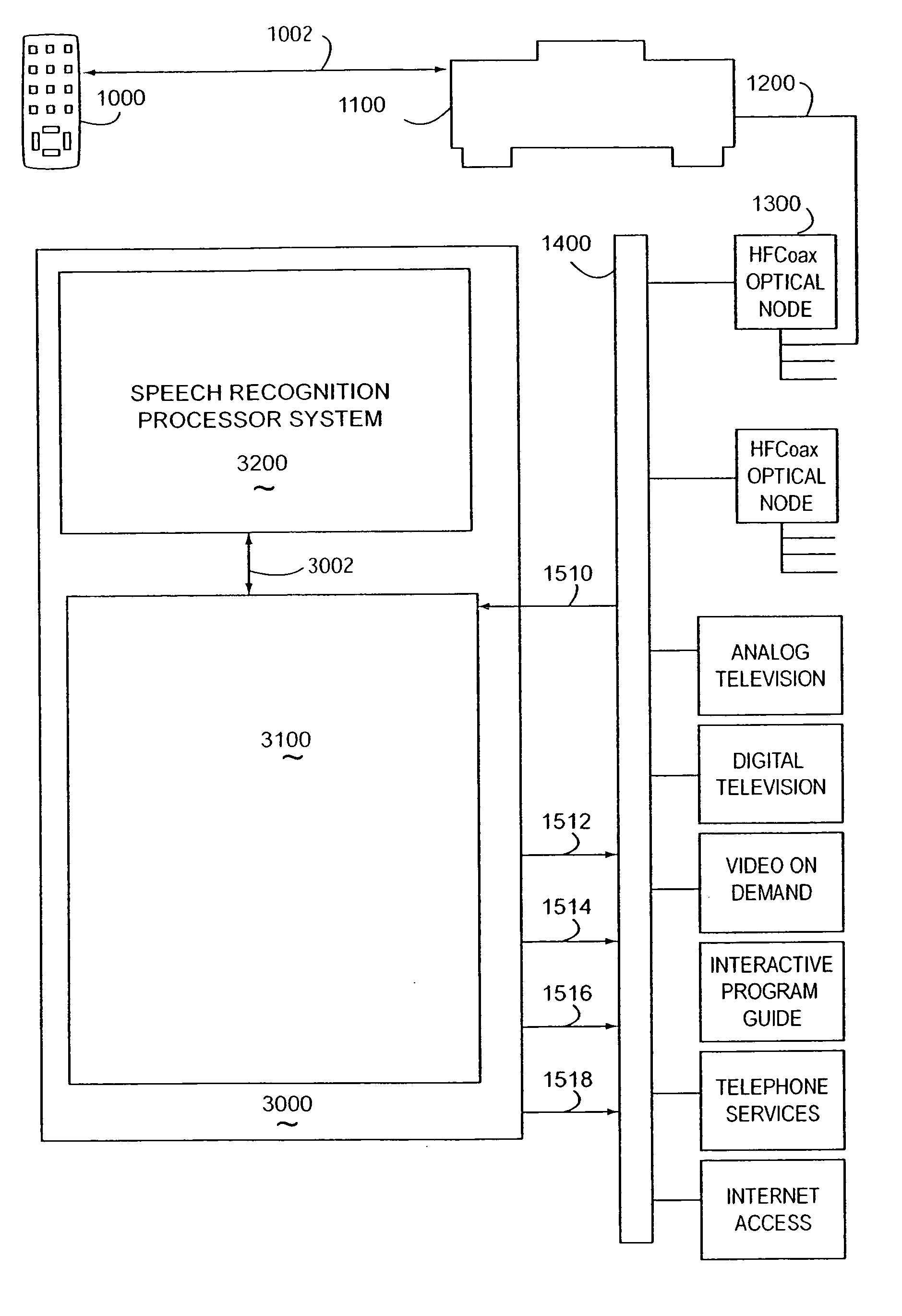System and method of voice recognition near a wireline node of a network supporting cable television and/or video delivery
a voice recognition and video delivery technology, applied in the field of voice recognition performed near a wireline node of a network supporting cable television and/or video delivery, can solve the problems of voice operated functions using the latest voice recognition technology limited to a handful of applications, limited number of commands, and unresolved problems of voice recognition at a centralized wireline node in a network supporting video delivery or cable television delivery. achieve the effect of improving recognition accuracy, fast and accurate speech navigation, and low latency
- Summary
- Abstract
- Description
- Claims
- Application Information
AI Technical Summary
Benefits of technology
Problems solved by technology
Method used
Image
Examples
Embodiment Construction
[0107]FIG. 3 depicts a remote control unit 1000 coupled 1002 to set-top apparatus 1100. Set-top apparatus 1100 communicates via a two-stage wireline communications system containing a wireline physical transport 1200 to a distributor node 1300. Set-top apparatus 1100 communicates through distributor node 1300 across a high-speed physical transport 1400 to a tightly coupled server farm 3000, possessing various delivery points 1510 and entry points 1512-1518. Tightly coupled server farm 3000 contains one or more gateways 3100, and one or more tightly coupled server arrays 3200.
[0108] As used herein, a server farm refers to a collection of at least two server components communicatively coupled to one another. The server components may or may not all be directly communicatively coupled to each other. A server component refers to at least a gateway, server array, server computer, database engine, or disk farm.
[0109] As used herein, gateway refers to at least one of the following: A gat...
PUM
 Login to View More
Login to View More Abstract
Description
Claims
Application Information
 Login to View More
Login to View More - R&D
- Intellectual Property
- Life Sciences
- Materials
- Tech Scout
- Unparalleled Data Quality
- Higher Quality Content
- 60% Fewer Hallucinations
Browse by: Latest US Patents, China's latest patents, Technical Efficacy Thesaurus, Application Domain, Technology Topic, Popular Technical Reports.
© 2025 PatSnap. All rights reserved.Legal|Privacy policy|Modern Slavery Act Transparency Statement|Sitemap|About US| Contact US: help@patsnap.com



